10 Engaging 1st Day of Homeschool Ideas for Beginners
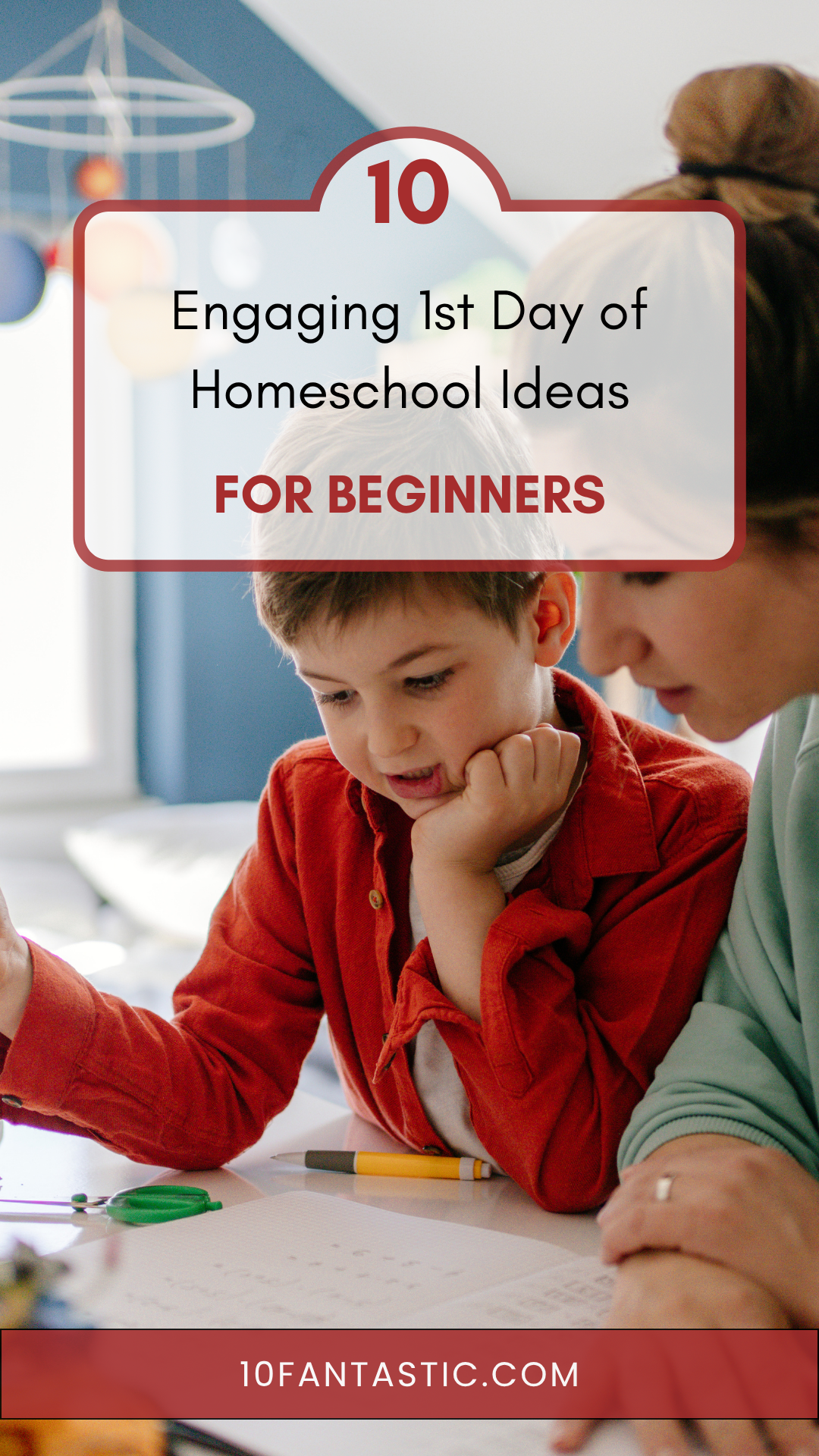
Starting your homeschool journey is exciting, but the first day often comes with a mix of nerves and questions. Parents wonder if the lessons will go smoothly, and kids wonder what to expect. That’s why planning the right activities can make all the difference. 1st Day of Homeschool Ideas are not just about learning; they are about setting the tone for the year ahead.
When the first day feels fun and welcoming, children are more likely to look forward to school at home. Instead of jumping straight into heavy lessons, the focus should be on creating comfort, building routines, and sparking curiosity. In this guide, we will share 10 engaging ideas that make the first day memorable, enjoyable, and a foundation for the months ahead.
Table of Contents
10 1st Day of Homeschool Ideas
1. Start with a Welcome Breakfast
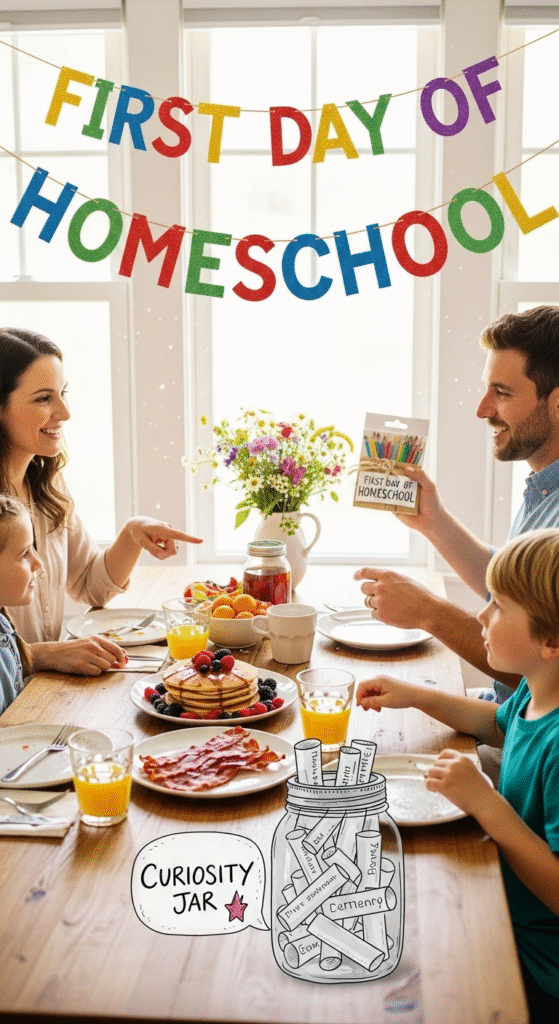
One of the easiest ways to begin your first day is with a special breakfast. Pancakes, waffles, or even simple fruit and muffins can set the morning apart from a regular day at home. Decorate the table with a few balloons or a fun sign that says “Happy First Day of Homeschool!” to make it feel festive.
A shared meal is more than food; it is a family moment. Talk about what everyone is excited to learn this year. Ask your child what subject they are most curious about or which activity they are looking forward to. This turns the morning into an event, not just another start of the week.
If your family enjoys traditions, make this breakfast a yearly ritual. Kids love routines they can count on, and this gives them something special to anticipate. It does not need to be elaborate. The key is the feeling of celebration.
2. Create a School Space Together
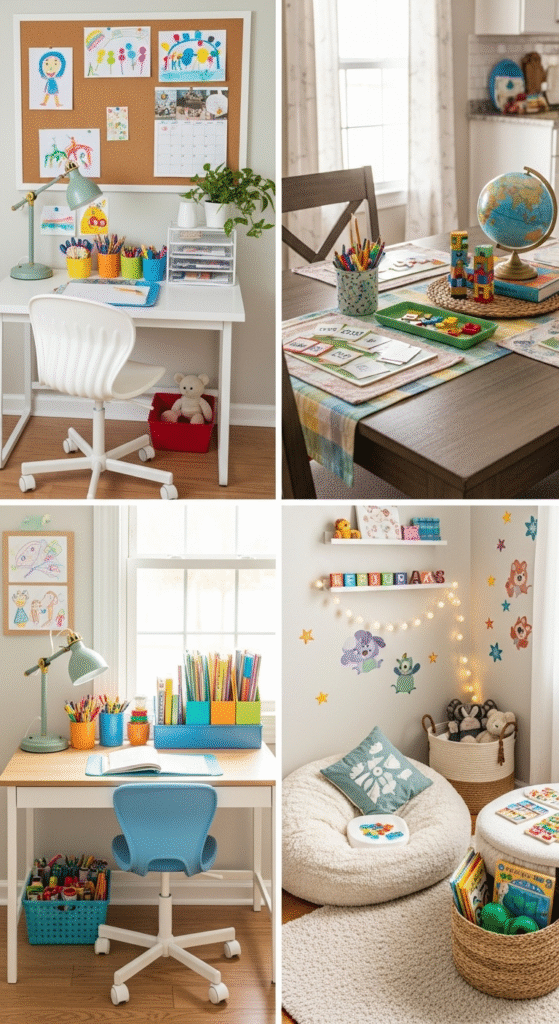
A learning space makes homeschooling feel official. On the first day, involve your child in setting it up. This could be a desk in their bedroom, a corner of the dining room, or a full learning nook in the living room. Add pencils, crayons, notebooks, and a few decorative touches.
Kids who help design their space are more likely to take ownership of their learning. Let them choose a poster, a small plant, or even a favorite stuffed toy to keep nearby. The area does not have to be fancy. It only needs to be organized and comfortable.
Label shelves or bins together so your child knows where everything goes. This helps prevent clutter from piling up and teaches early responsibility. By creating a space that feels like theirs, you set the stage for smoother study sessions throughout the year.
3. Make a Fun School Supplies Scavenger Hunt
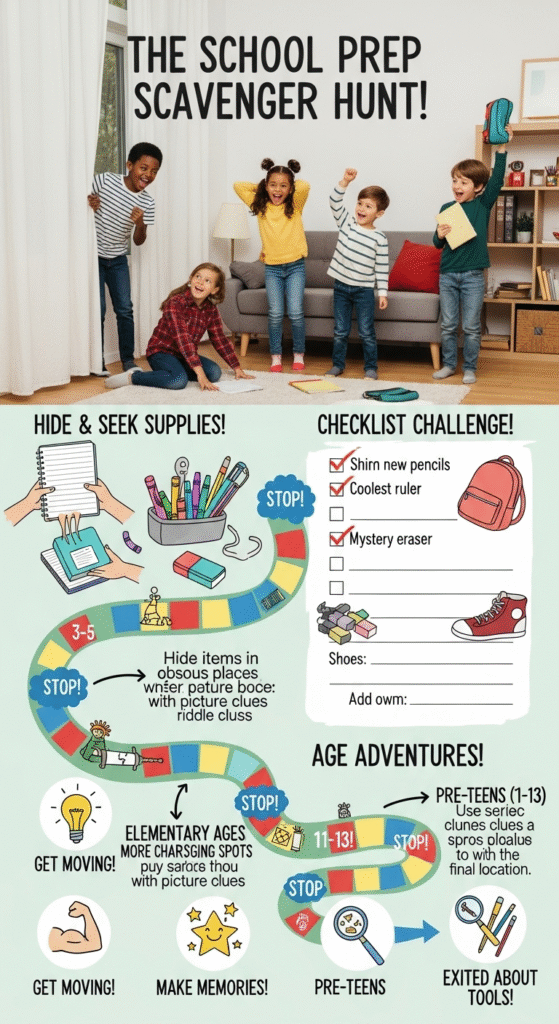
Instead of simply handing over notebooks and supplies, turn it into a game. Hide pencils, erasers, colored markers, and glue sticks around the house, then give your child a checklist. Each item they find gets added to their school box or desk.
This activity adds excitement and movement to the morning. It also helps children feel connected to their supplies since they discovered them on their own. Younger kids especially love the thrill of hunting, and it can be adapted for different ages by making the hiding spots easier or trickier.
When the scavenger hunt ends, gather all the supplies and talk about how each one will be used. This is a playful way to introduce the tools of learning while keeping the energy light and cheerful.
4. Create a First-Day Photo Tradition
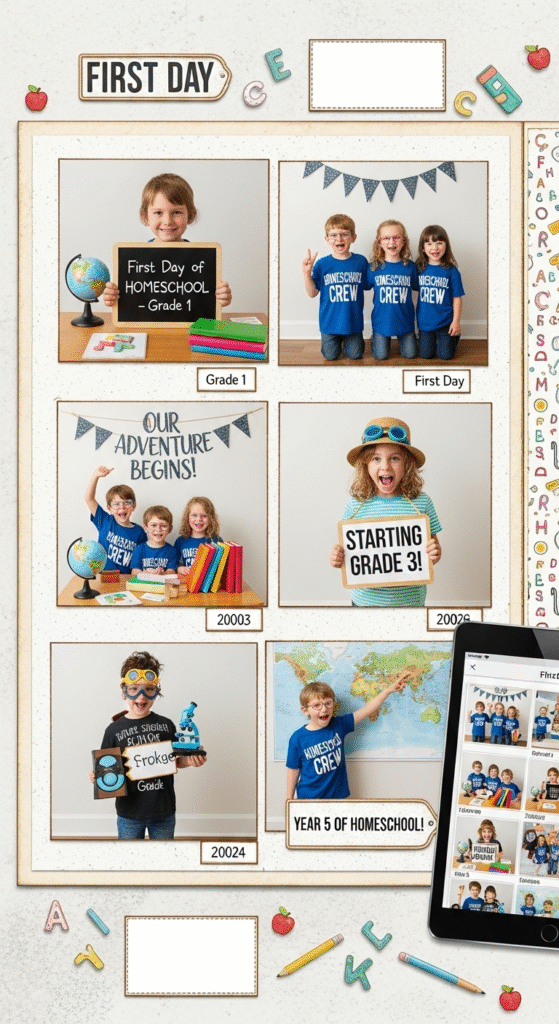
Just like kids in traditional schools take first-day photos, homeschoolers can do the same. Print a sign that says “1st Day of Homeschool” with the grade level and year. Take a picture of your child holding it.
If you want to go further, make it a small photo shoot. Use props like books, chalkboards, or even their favorite toy. Some parents create a scrapbook or digital album where they add a new picture every year. Over time, this becomes a treasured memory of your child’s growth.
Kids enjoy posing and seeing themselves celebrated, and it gives them a sense of pride in their school year. It is also a nice way for extended family to feel connected to your homeschool journey when you share the photos with grandparents or relatives.
5. Write a “Goals and Dreams” Journal Entry
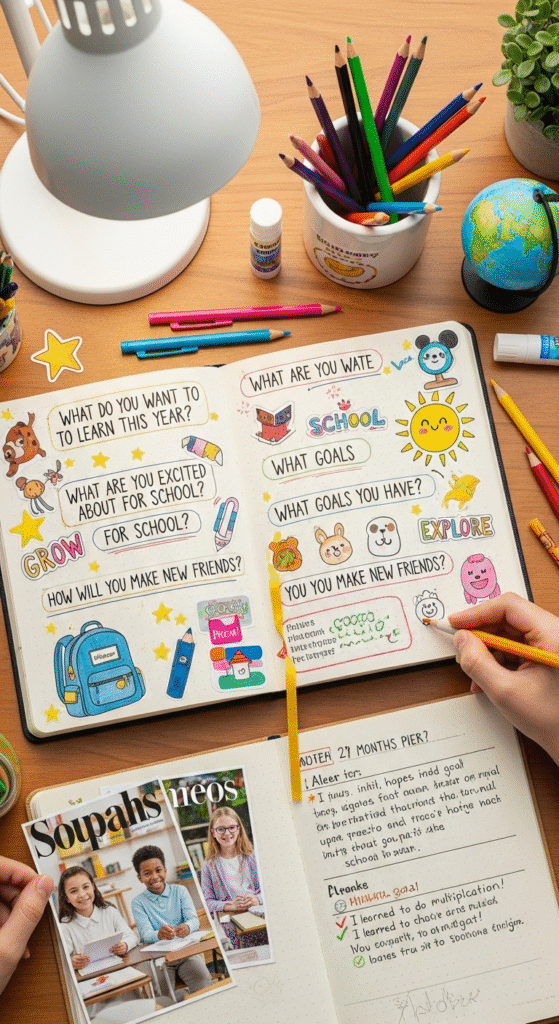
A journal activity helps children reflect on what they hope to achieve. On the first day, give your child a notebook and ask them to write (or draw, for younger kids) their goals for the year. This could be learning to read more books, mastering multiplication, or even building a birdhouse.
The journal can be revisited at the end of the school year. Reading their own words from months earlier shows them how much they have grown. It also helps parents see the areas where children feel motivated or unsure.
Encourage creativity. Kids can add stickers, doodles, or magazine clippings to their entry. The goal is not grammar or neat handwriting, but self-expression and ownership of learning.
6. Take a Nature Walk and Call It Science

Learning does not have to start at a desk. Take the first day outside with a simple nature walk. Bring along a notebook or sketchpad and ask your child to notice interesting things: leaves, insects, birds, or flowers.
When you return, discuss what they saw. You can identify plants using a guidebook or an app, or simply talk about observations. Did they notice patterns on a leaf? How many types of birds did they hear? This activity sparks curiosity without feeling like formal science.
The fresh air also helps kids burn energy and feel more focused when you return home. It is an easy way to combine physical activity with learning, and it shows that homeschooling does not always mean being indoors.
7. Make an “All About Me” Poster
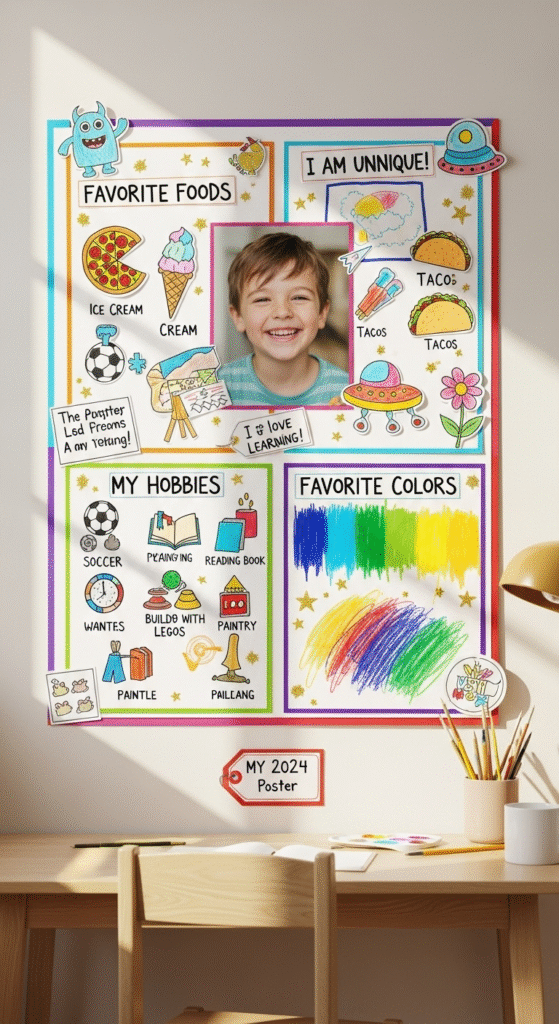
An “All About Me” poster is a fun way to celebrate who your child is right now. On a large sheet of paper, have them write their name, age, favorite food, favorite subject, and a fun fact about themselves. Encourage them to add drawings or cutouts from magazines.
This activity not only makes them feel proud but also gives you a keepsake. Each year, the poster will look different as their interests change. You can even hang it in their school space as decoration for the first few weeks.
For younger kids, you can help by writing their answers as they dictate. Older kids can get creative with design, colors, and personal touches. Either way, it is a simple but memorable way to mark the first day.
8. Try a Light and Fun Lesson
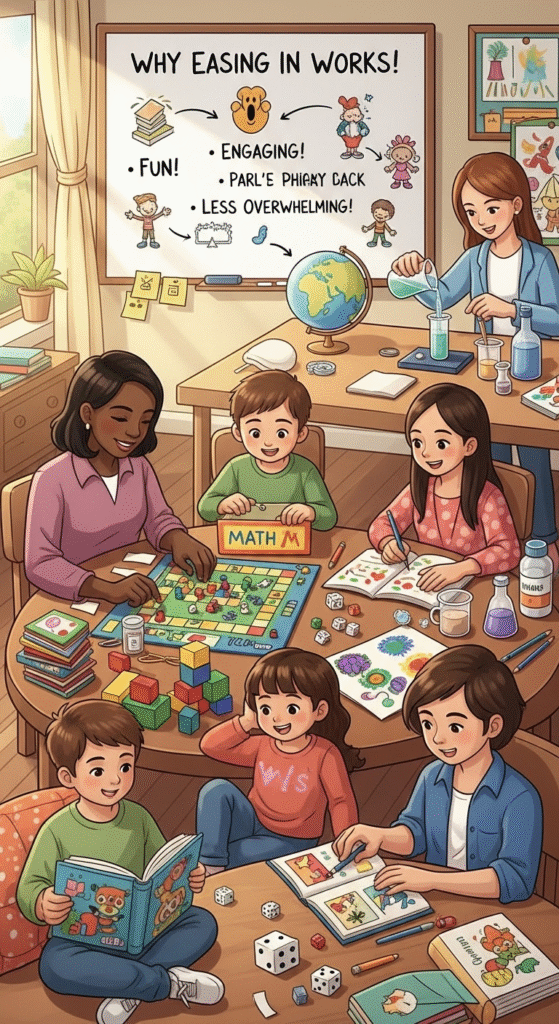
Instead of starting with heavy academics, begin with a light lesson. For example, you could read a favorite storybook and discuss the characters, or do a quick math game with dice. The point is to ease into learning without overwhelming your child.
Short, fun lessons remind kids that homeschooling can be enjoyable. You can gradually build up to more structured work over the next few days. A first day filled with pressure often backfires, while a gentle start builds confidence.
If you have multiple children, try a group activity like a science experiment or art project. Shared lessons build a sense of teamwork and make the day feel special for everyone.
9. Create a Time Capsule
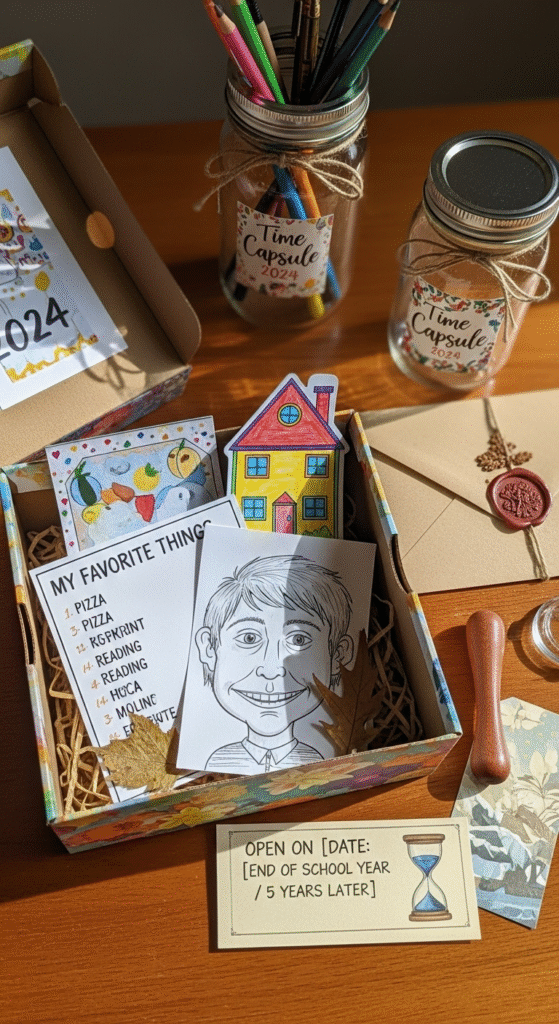
A time capsule is a project your child will love to revisit later. Have them fill a box or jar with small items that represent who they are now. This might include a drawing, a list of favorite songs, or a self-portrait. Seal it and mark it to be opened at the end of the school year or even years later.
This activity sparks excitement about the future while helping children reflect on their present. It can also be a family tradition, where each person in the household contributes something.
When you finally open it, the comparisons are fun and often surprising. Kids enjoy seeing how their handwriting, favorites, and interests change over time.
10. End with a Family Celebration

Wrap up the first day with a family celebration. This could be as simple as ice cream after dinner, a small movie night, or board games together. Marking the end of the day with joy helps children feel that homeschooling is not only about schoolwork but also about togetherness.
Ask your child what their favorite part of the day was. Celebrate their effort, not just results. These positive endings encourage excitement for the days ahead and build a family bond around learning.
Creating traditions makes the first day stand out. When kids know there is something to look forward to at the end, they will approach the day with more enthusiasm.
Extra Tips for a Smooth First Day
- Keep the schedule light. Do not try to cover every subject at once.
- Add movement breaks. Kids learn better when they can stretch or move between activities.
- Mix learning with play. Games, crafts, and outdoor time keep the day balanced.
- Celebrate small wins. Praise effort and curiosity more than perfect answers.
- Stay flexible. If something is not working, adjust and try again.
Conclusion
The first day of homeschooling is more than a start. It is a memory that sets the tone for the whole year. By focusing on fun, connection, and gentle routines, you make it easier for your child to adjust to learning at home.
These 10 engaging 1st Day of Homeschool Ideas give you a mix of traditions, activities, and lessons that make the day memorable. From welcome breakfasts and scavenger hunts to nature walks and family celebrations, each idea builds confidence and joy.
Homeschooling may be a new journey, but with the right first step, it can also be a rewarding one. Take the time to create a day that feels special, and you will not only start strong, you will create a tradition your child will look forward to every year.






